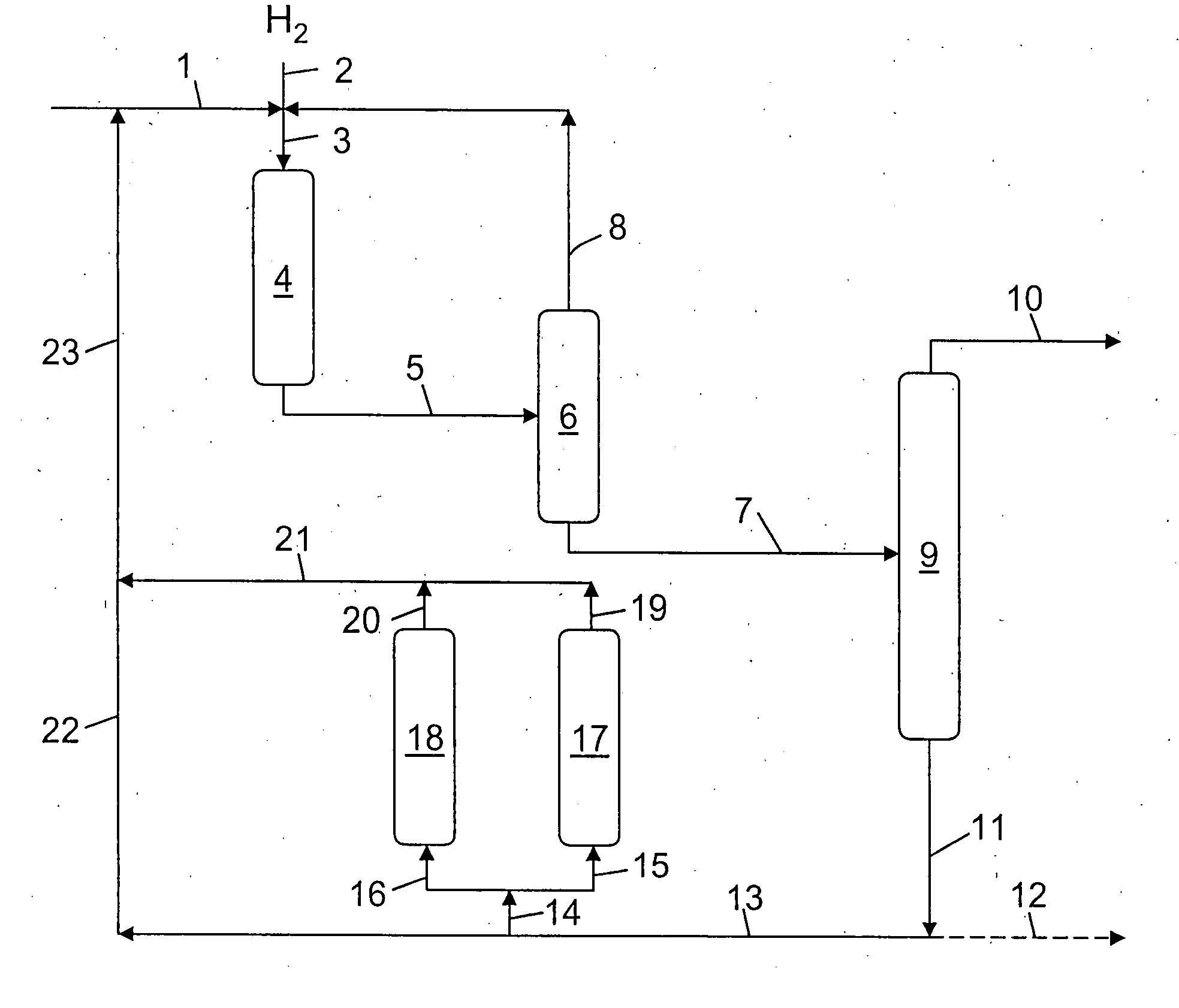Hydrocracking process with recycle, comprising adsorption of polyaromatic compounds from the recycled fraction on an adsorbant based on silica-alumina with a controlled macropore content
a technology of hydrocracking and recycle, applied in the field of hydrocracking processes, can solve the problems of loss of capacity, accumulation of polyaromatic compounds (pna), and low yield
- Summary
- Abstract
- Description
- Claims
- Application Information
AI Technical Summary
Benefits of technology
Problems solved by technology
Method used
Image
Examples
example 1
Preparation of Silica Alumina SA1
[0119] Adsorbent SA1 was obtained as follows.
[0120] The adsorbent SA1 was an alumina-silica which had a chemical composition of 60% Al2O3 and 40% SiO2 by weight. Its Si / Al ratio was 0.6. Its sodium content was of the order of 100-120 ppm by weight. The extrudates were cylindrical with a diameter of 1.6 mm. Its specific surface area was 345 m2 / g. Its total pore volume, measured by mercury porosimetry, was 0.83 cm3 / g. The pore distribution was bimodal. In the mesopores region, a broad peak was observed between 4 and 15 nm with a maximum at 7 nm. For the support, the macropores, with a largest diameter of more than 50 nm, represented about 40% of the total pore volume.
example 2
Comparison of Elimination of PNAs from a Feed by Adsorption on Porous Solid
[0121] The feed used corresponded to residues from the bottom of a fractionation column. Its pour point was of the order of 36° C. and its density at 15° C. was 0.8357. It contained 95% by weight of saturated compounds (83.6% by weight of paraffinic compounds and 11.4% by weight of naphthenic compounds), 0.5% by weight of resins and 2.9% by weight of aromatic compounds, 2.6% by weight of which was constituted by monoaromatic compounds, 0.56% by weight of which was constituted by diaromatic compounds, 0.57%. by weight of which was constituted by triaromatic compounds, 2704 ppm of pyrene (4 rings), 1215 ppm of perylene (5 rings) and 59 ppm of coronene (7 rings).
[0122] The porous solids tested corresponded to a mesoporous solid of the purely silicic MCM-41 type, a SiO2 bridged beidellite type clay, a silica gel, an activated alumina, a physically activated charcoal from a cellulose precursor and a silica-alumi...
example 3
Regeneration of Adsorbent by Burning
[0127] The adsorbent was regenerated by burning using a stream of N2 containing 5% of O2 at 550° C. After these operations, 97% of the capacity of the starting solid was recovered.
[0128] This operation could be carried out about ten times before losing 30% of capacity.
PUM
| Property | Measurement | Unit |
|---|---|---|
| BET specific surface area | aaaaa | aaaaa |
| temperature | aaaaa | aaaaa |
| temperature | aaaaa | aaaaa |
Abstract
Description
Claims
Application Information
 Login to View More
Login to View More - R&D
- Intellectual Property
- Life Sciences
- Materials
- Tech Scout
- Unparalleled Data Quality
- Higher Quality Content
- 60% Fewer Hallucinations
Browse by: Latest US Patents, China's latest patents, Technical Efficacy Thesaurus, Application Domain, Technology Topic, Popular Technical Reports.
© 2025 PatSnap. All rights reserved.Legal|Privacy policy|Modern Slavery Act Transparency Statement|Sitemap|About US| Contact US: help@patsnap.com



